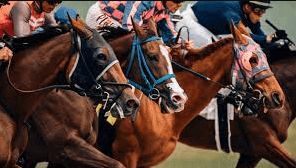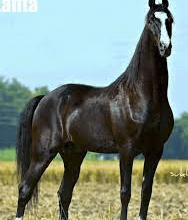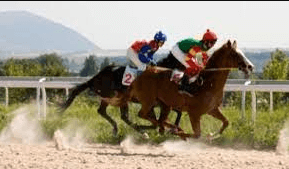What Are The Different Types Of Horse Races In Thoroughbred Racing, Such As Sprints, Middle-Distance, And Long-Distance Races?

Thoroughbred racing, a popular sport steeped in tradition and history, encompasses a variety of different types of horse races. Each race is uniquely designed to test the speed, stamina, agility, and adaptability of the magnificent Thoroughbred horses. From lightning-fast sprints that showcase pure speed and agility to grueling long-distance battles that demand endurance and strategy, these races offer an exhilarating spectacle for both spectators and participants.
One category of races in Thoroughbred racing is sprints. These lightning-fast events are characterized by their short distances, typically ranging from 5 furlongs to 7 furlongs. Sprints are all about showcasing a horse’s sheer speed and agility as they race towards the finish line in a burst of energy.
Middle-distance races strike a balance between speed and stamina, challenging horses to maintain their pace over distances ranging from 1 mile to 1 ¼ miles. These races require strategic pacing and tactical maneuvering to ensure that the horse has enough energy to make a strong final push towards victory.
On the other end of the spectrum are long-distance races that truly test a horse’s endurance and ability to sustain its performance over extended periods. Generally spanning more than 1 ¼ miles, these grueling battles demand careful pacing, mental fortitude, and exceptional conditioning from both jockey and steed.
In addition to distance-based categorizations, there are other types of races within Thoroughbred racing that provide unique challenges for horses and jockeys alike. Handicap races involve horses carrying different weights based on their ability in order to level the playing field among competitors.
Maiden races provide an opportunity for horses that have yet to win a race to compete against one another without facing more experienced opponents. Claiming races allow interested buyers to acquire horses by placing claims on them before or after the race based on predetermined prices set by owners or trainers. Stakes races offer prestigious titles with larger prize money and attract top-quality competition, often featuring elite Thoroughbreds.
Turf races test a horse’s adaptability as they are run on grass surfaces, requiring different strategies and tactics compared to traditional dirt track races. Lastly, steeplechase races introduce an extra challenge with jumps and obstacles that horses and jockeys must navigate, adding an element of excitement and unpredictability to the race.
In conclusion, Thoroughbred racing offers a wide range of horse races that cater to various aspects of equine athleticism. From sprints that emphasize speed and agility to long-distance battles that test endurance, there is something for everyone in this thrilling sport.
Sprints: Lightning-fast races showcasing speed and agility
Sprints in thoroughbred racing are electrifying events where horses demonstrate their lightning-fast speed and remarkable agility as they powerfully gallop towards the finish line.
These races, typically covering distances of six furlongs or less, require a unique set of skills from both the jockey and the horse.
To excel in sprints, horses undergo specialized sprint training techniques to enhance their burst of speed and acceleration. This includes interval training, where horses alternate between intense bursts of running and periods of rest.
Additionally, trainers focus on developing a horse’s explosive power through exercises such as hill sprints and plyometrics.
Throughout history, there have been legendary sprint horses who have dominated this exciting type of race. Horses like Secretariat, Man o’ War, and Black Caviar have captivated audiences with their incredible speed and consistent victories in sprint races.
Their impressive performances serve as a testament to the thrilling nature of sprints in thoroughbred racing.
Middle-distance races: A balance between speed and stamina
Middle-distance races in thoroughbred racing strike a fine balance between the demands of speed and stamina, offering an exhilarating display of equine athleticism.
These races typically range from 1 mile to 1 ¼ miles in distance, requiring horses to possess both quick acceleration and the ability to maintain their speed over a sustained period.
Unlike sprints where pure speed is paramount, middle-distance races demand a strategic approach that factors in pacing and endurance.
Jockeys must carefully manage their horse’s energy expenditure, ensuring they have enough left for a strong finish while avoiding burning out too early.
In these races, the importance of strategy becomes evident as horses that start too fast may falter towards the end, while those that pace themselves well can make decisive moves in the closing stages.
Middle-distance races provide an intriguing challenge not only for horses but also for trainers and jockeys who must find the delicate balance between exertion and conservation of energy to achieve success on the track.
Long-distance races: Grueling battles testing endurance and strategy
In the realm of thoroughbred racing, long-distance races emerge as arduous battles that put both the endurance and strategic skills of horses, trainers, and jockeys to the ultimate test.
These grueling races, often spanning over a mile or more, require horses to maintain a steady pace for an extended period of time. Endurance becomes paramount in these races, as horses must conserve their energy and navigate through the challenges presented by longer distances.
Speed alone is not enough to secure victory in long-distance races; it is the careful balance between speed and stamina that determines success. Jockeys and trainers play a crucial role in developing tactics and strategies that maximize their horse’s strengths while minimizing fatigue.
They must analyze race conditions such as track surface, weather, and competition to make informed decisions on when to push their horses forward or hold them back.
This blend of physical prowess and tactical acumen makes long-distance races captivating spectacles where every move counts towards securing victory.
Handicap races: Races where horses carry different weights based on their ability
Handicap races require horses to carry varying weights based on their individual abilities, with the aim of promoting a more balanced and competitive field.
These races are designed to even out the competition by giving less talented horses a chance against more skilled competitors.
One example of a handicap race is the weight for age race, where horses of different ages carry different weights depending on their maturity level. This type of race allows younger horses to compete against older and more experienced ones while taking into account their physical development.
Another type of handicap race is the apprentice race, which enables young jockeys who are still learning and gaining experience to participate in competitive events. In these races, apprentice jockeys are assigned certain weight allowances that provide them with an advantage over more seasoned riders.
Overall, handicap races add excitement and strategy to thoroughbred racing by introducing variable weight assignments that can significantly impact the outcome of each race.
Maiden races: Races for horses that have yet to win a race
Maiden races are designed for horses that have yet to secure a victory, allowing them the opportunity to compete against similarly inexperienced rivals.
In these races, trainers employ various strategies to train and prepare their horses for success. This may involve focusing on building the horse’s fitness, improving their speed and stamina, and refining their racing skills. Additionally, trainers may work on developing the horse’s mental preparedness, teaching them how to handle the pressure of a race environment.
Maiden races hold great significance in a horse’s career development as they serve as a stepping stone towards future success. These races provide valuable experience for young horses, allowing them to gain confidence and learn important lessons about racing tactics and strategies.
Participating in maiden races also helps horses establish their official racing record, which can impact their future opportunities for breeding or competing at higher levels.
Overall, maiden races play a crucial role in shaping a horse’s career trajectory by providing necessary exposure and learning opportunities early on.
Claiming races: Races where horses can be bought or claimed by new owners
Claiming races are like a bustling marketplace, where horses can be bought or claimed by new owners, adding an element of excitement and unpredictability to the world of horse racing.
These races provide a unique opportunity for both experienced and novice horse owners to acquire horses at various levels of ability.
Different strategies come into play in claiming races, as owners carefully assess the competing horses’ past performances, current form, and potential for improvement.
Some owners may opt for horses with a consistent track record and proven success, while others may take a chance on overlooked or undervalued contenders who show promise.
The impact of claiming races on horse ownership is significant. They allow for fluid movement within the racing industry, promoting competitiveness and giving lesser-known trainers and owners a chance to showcase their skills.
Additionally, these races contribute to maintaining balance in the sport by preventing monopolies over exceptional racehorses while offering fair opportunities for all participants.
Overall, claiming races bring an exciting dynamic to thoroughbred racing and serve as an essential avenue for acquiring new talent and diversifying horse ownership.
Stakes races: Prestigious races with larger prize money and top-quality competition
Stakes races, revered as the pinnacle of horse racing events, exude an aura of prestige and grandeur with their substantial prize pools and fiercely competitive fields.
These prestigious races attract top-quality competition from around the world, showcasing the very best thoroughbred horses and jockeys.
The level of talent and skill on display in stakes races is unparalleled, as only the most elite racehorses are able to compete at this level.
With large sums of money on the line, these races command attention from both avid fans and industry professionals alike.
Stakes races can range in distance from sprints to middle-distance to long-distance events, thereby testing a horse’s speed, stamina, and versatility.
Within this category of races, there are further distinctions such as Grade 1 stakes races that are considered the most important and valuable.
These highly anticipated events captivate audiences worldwide with their thrilling displays of athleticism and strategic prowess.
In conclusion, stakes races epitomize excellence in thoroughbred racing by bringing together top-quality competition in an atmosphere charged with excitement and aspiration for victory.
Turf races: Races run on grass surfaces, testing a horse’s adaptability
Turf races, known for their lush and vibrant grass surfaces, provide a captivating display of a horse’s adaptability and grace. These races test the horse’s ability to perform on a different type of surface compared to the more common dirt tracks.
The grass surface requires horses to adjust their running style and find solid footing in order to maintain their speed and momentum. Turf races often attract top-quality competition, as trainers and owners recognize the importance of demonstrating adaptability in a variety of conditions.
Horses that excel on turf are admired for their agility, balance, and smooth stride. The grass surface can be unpredictable, with variations in firmness depending on weather conditions, making it essential for horses to quickly adapt their strategy during the race.
Overall, turf races offer an intriguing challenge to both horses and jockeys alike, showcasing the true athleticism of these magnificent animals on a different playing field.
Steeplechase races: Races involving jumps and obstacles, adding an extra challenge for horses and jockeys
Moving on from turf races, another exciting type of horse race in thoroughbred racing is the steeplechase. Steeplechase races involve jumps and obstacles, adding an extra challenge for both horses and jockeys.
These races require a specific set of skills and techniques to navigate the course successfully. The design of steeplechase courses plays a crucial role in testing the adaptability and agility of the horses.
The obstacles vary in height and width, including hurdles, water jumps, ditches, and open ditches. Horses must have the ability to jump cleanly over these obstacles while maintaining their speed and stride rhythm.
Jockeys also play a significant role in steering their mounts safely through the course, ensuring they maintain balance and control during each jump.
Overall, steeplechase races provide a thrilling spectacle for spectators as they witness horses overcome these formidable obstacles with skill and athleticism.
Frequently Asked Questions
Are there any other types of horse races besides sprints, middle-distance, long-distance, handicap, maiden, claiming, stakes, turf, and steeplechase races?
Beyond the traditional categories of sprints, middle-distance, long-distance, handicap, maiden, claiming, stakes, turf, and steeplechase races in thoroughbred racing exist other types that offer unique challenges and excitement. These include endurance races and obstacle courses known as cross-country races.
How are the weights determined in handicap races?
Determining weights in handicap races involves an analysis of various factors such as the horse’s previous performances, age, sex, and distance preferences. These factors are assessed to ensure a fair competition among horses with different abilities and maximize their chances of victory.
What is the significance of winning a stakes race?
Winning a stakes race holds great significance in Thoroughbred racing. It not only elevates a horse’s reputation and value but also has a substantial impact on its breeding career, attracting lucrative stud fees.
Are there any specific strategies or tactics used in turf races that differ from other types of races?
Strategies in turf races differ from other types of races. Turf racing offers advantages such as a softer surface, which requires horses to adjust their running style. Jockeys often employ tactics like saving ground and timing their moves to maximize success on turf.
What are some common obstacles found in steeplechase races?
Common obstacles in steeplechase races include fences, ditches, and water jumps. Horses must utilize jumping techniques such as bascule, scope, and balance to clear these obstacles successfully, showcasing their athleticism and agility.
Conclusion
In conclusion, thoroughbred racing offers a captivating array of races that test the skills and abilities of both horses and jockeys. From lightning-fast sprints to grueling long-distance battles, each race presents its own unique challenges.
The irony lies in the fact that while speed is highly valued in sprints, it becomes less important in middle-distance and long-distance races where endurance and strategy take center stage.
The inclusion of handicap races adds an intriguing twist, as horses carry different weights based on their ability, leveling the playing field and creating thrilling competitions.
Maiden races provide an opportunity for up-and-coming horses to showcase their potential, while claiming races offer a chance for new owners to acquire promising talent.
Stakes races stand out as the pinnacle of thoroughbred racing, attracting top-quality competition and boasting larger prize money. These prestigious events are eagerly anticipated by horse racing enthusiasts around the world.
Turf races introduce an element of adaptability as horses must navigate grass surfaces. This challenges their agility and requires them to adjust their running style.
Finally, steeplechase races add an extra layer of excitement with jumps and obstacles presenting a formidable challenge for both horses and jockeys.
Overall, thoroughbred racing encompasses a wide range of race types that cater to various strengths and preferences. Whether one is drawn to the sheer speed of sprints or captivated by the strategic battles in long-distance contests, there is something uniquely thrilling about witnessing these magnificent creatures compete at such high levels.




